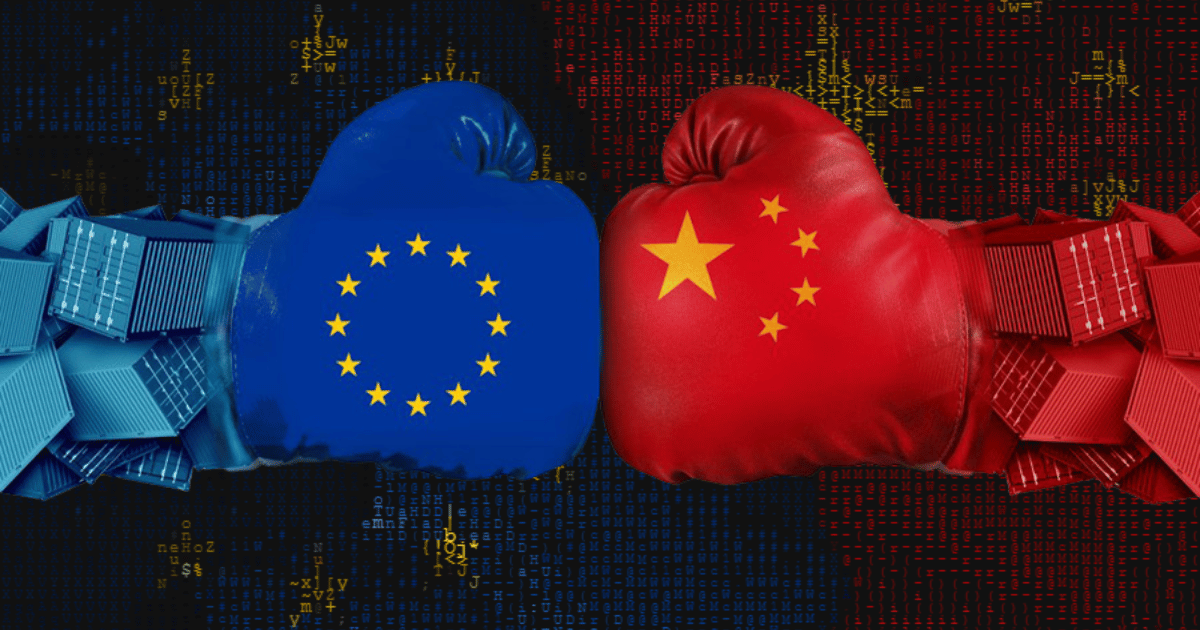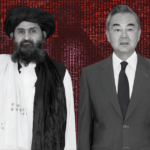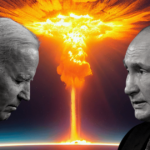Historical relations China-EU
Colonialism in China, which initially started in only a few treaty port areas during the 1840s, gradually expanded over time and continued for more than a century, finally to end in 1945 after Japan was defeated in World War II. China was a full-fledged colony of the British. The primary motive of British imperialism in China in the nineteenth century was economic. There was a high demand for Chinese tea, silk and porcelain in the British market.
The Germans, the Russians, and the Japanese also colonized China apart the English. Germany’s naval base at Qingdao city in China, was counted by around 4,000 troops. In this respect, Britain had considered the German presence in China as a threat to her interests and since 1902 had been in alliance with Japan. The Sino-Japanese War (1937-1945) was one of the most destructive conflicts of World War II. It began with the Marco Polo Bridge Incident of July 7, 1937, and ended with Japan’s surrender on September 2, 1945.
Colonialism ended in 1945 and supporting by the Soviet Union, Mao Zedong established the People’s Republic of China in Beijing on 1 October 1949. Since the PRC was founded in 1949, China has experienced a surprising and turbulent economic development process, including revolution, socialism, Maoism, and finally the gradual economic reform and fast economic growth that has characterized the post-Maoist period. Therefore, China established diplomatic relations with EU in 1975.
In that period, the EU was named as European Community. Since the establishment, these relations have been advanced and expanded in different dimensions, despite the clear divergences between the two entities. In this spectrum, the political status of Taiwan, respect on human rights, as well as territorial disputes in the South China Sea remain unresolved issues between China and West.
Also Read: Beijing-Taliban Ties: Practicality Binds Two Opposites
As a matter of fact, the EU is the China’s largest trading partner, and China is the EU’s largest trade partner. The EU is a key partner for China regarding imports and exports – and investment, as well as China is benefiting from the European Union’s experience in the field of trade and economy. Thus, mutual benefit is the basis of their trade relations.
In the framework of people exchange, Chinese people who live in Europe are mostly concentrated in the United Kingdom, France and Italy. As regards, French Chinese communities are the oldest communities in Europe.
Relations China-US
Traditionally, the relations between China and US have been very complicated and fragile. The United States blocked the China’s membership in the United Nations, for a long period because of the Tawain dispute. However, the President Richard Nixon applied a smooth approach to the Sino – American relations, paying an official visit to China in 1972. Pursuing this visit, the US signed the normalization agreement with China in 1978 and established diplomatic relations with the PRC in January 1, 1979, recognizing it as the single legitimate government of China.
Despite this fact, the US continued unofficial ties with Taiwan within the framework of the Taiwan Relations Act, hence the political status of Taiwan remains an unresolved issue between two countries. Many western countries (including EU countries) recognize “One China Policy” and they do not have official relations with Tawain.
Relations EU-Tawain
In July 2022, the new EU ambassador to China Jorge Toledo Albiñana said that the EU does not support Taiwan independence, but “peaceful reunification”, adding: “We believe that there should be only one China, but in the event of a military invasion we have made it very clear that the EU, with the United States and its …”
Taiwan, under the name of the Separate Customs Territory of Taiwan, Penghu, Kinmen and Matsu, has been a member of the World Trade Organisation (WTO) since January 2002. The EU and Taiwan have developed a close trade and economic partnership. In 2020, Taiwan became the EU’s 14th trading partner in the world. Bilateral trade in goods decreased by 3.2% to €49.3bn. The EU is Taiwan’s largest foreign investor as well Taiwan is an important trading partner and a key player in the global value-added chains. The fields of cooperation are focused on Innovations in the Information Communication Technology, artificial intelligence, smart mobility and green energy.
The EU and Taiwan have trade and economic relations and hold annually bilateral trade consultations, a mid-term review, the industrial policy dialogue, the dialogue on digital economy and various sectoral working groups. The EU has the presence of 15 Member States trade offices in Taipei. In this framework of cooperation, the European Chamber of Commerce Taiwan represents European businesses in Taiwan. The EU-financed European Business and Regulatory Cooperation (EBRC) is implementing programs and projects to facilitate regulatory coherence and business collaboration with Taiwan and the region amid Potential of QMV in the EU’s Common Foreign and Security Policy.
Read More: The Future of EU-Russia Relations: A View from Moscow
Current relations
The approach of the administration of Barack Obama towards China was very complex. In that period two countries signed a record number of bilateral agreements with China, but on the other hand US was critical to the China policy on the issues regarding the South China Sea, Taiwan issue as well as human rights issue. It’s clear evidence that the most important agreement was the agreement on climate change. Even though, the negotiations on the agreement on the mutual investment didn’t advance so much.
Relations between two countries declined during the Xi Jinping's administration, following the election of Donald Trump as the US president. The disagreements between two sides were focused to the China's militarization of the South China Sea and Chinese espionage in the United States. Trump's political position regarding China’s policy was very conservative, calling China a "strategic competitor" in 2017 and launching a trade war against China, in January 2018.
In addition, US increased restrictions on visa’s Chinese students, American companies were not allowed to sell equipment to Chinese companies and the US enforced relations with Taiwan. In this spirit of tough approach, on 19 January 2021, the U.S. officially recognized China’s treatment of Uyghurs as a genocide. Following the election of Joe Biden in the 2020 presidential elections, tensions between the two countries have continued. Biden’s administration encouraged regional alliances against China, and extended relations with Taiwan. The president Biden called this policy as “competition, not conflict”.
On the other hand, China has denied all the accusations on human right violations. As a result, this “trade cold war” between US and China as well as the Russian’s war in Ukraine have affected the trade relations between the EU and China.
China is an important a trading partner to Germany (and vice versa). Germany is China’s biggest trading partner and technology exporter in Europe. During her tenure, Angela Merkel has paid 12 official visits to China, marking a peak to the German-China relations. In that period there were a lot of protest by pro-democracy in Hong Kong supported by Western countries such as Great Britain etc.
Even though China and German signed a various agreement on that period, Chancellor Angela Merkel has always addressed human rights issues. However, Merkel invited Chinese companies to invest in Germany and to that regard she was pushing the acceleration of the negotiations on the investment treaty between China and EU. Chancellor Merkel traveled with a high-level business delegation to China, including the CEOs of BASF, BMW, Deutsche Bank and Siemens. Therefore, the signed agreements were focused on cooperation in areas such as aviation, automotive, clean energy and finance.
The ambition of China was to upgrade the investment treaty to a free trade agreement. As a result, after the seven years of negotiations, the EU-China Comprehensive Agreement on Investment (CAI) didn’t last very long. On 30 December 2020, the EU and China concluded in principle the negotiations on the Comprehensive Agreement on Investment (CAI), which permits EU investors to access to China’s market. After this political agreement, the European Parliament voted to freeze its ratification in May 2021. The CAI has not yet been ratified and thus has not yet entered into force.
Aiming to enter the EU trade through the Eastern European countries, China established in 2012 the initiative 16+1 which became later 17+1 because Greece joined it. This initiative testified the ambition of China to invest to the Eastern European countries and to give a loan through the Exim bank of China.
China succeeded to have few projects to Serbia, Montenegro, Bosnia-Hercegovina, Poland, Hungary and North Macedonia but the loan was very high, and it put in financial difficult position countries in the Western Balkans, such as Montenegro, North Macedonia etc.. Thus, this initiative was not successful as well as the ambition of China to create a sphere of influence to the Eastern Europe. In August 2022, Latvia and Estonia withdrew from this initiative because pursuing a close approach to Tawain they weakened the relations with China.
In three years, there was a stalemate in Chinese-EU relations. On November 4, 2022, Chancellor Olaf Scholz paid a state visit to Beijing, being the first European leader to meet Xi Jinping in three years. As a matter of facts, China as a big global economy has a comparative advantage in some clean technologies, such as solar panels, electric cars, innovation, renewable energy potential etc. Nonetheless, China is particularly exposed to the impact of the climate crisis.
On the other hand, Europe and US are concerned about the jobs consequences because of the green transition. They are ware that the car industries are important for their economies and China has a large volume of clean tech exports, especially to Europe. Hence, the concentration of global clean tech supply chains in China, indicates a high risk to US and Europe.
There is a different approach towards China by the Foreign Minister Baerbock, who represents the Germany’s Greens party. She is very critical to China especially on the issues of human rights and Taiwan. She said that China posed a challenge to the “fundamentals of how we live together in this world.”
Recently, there is a shift on the western policy towards China, which is the second largest economy. Josep Borrell, the EU high representative for foreign affairs, called for improved access for European companies that want to export to or invest in China, stating that political leaders in Europe could face pressure from their voters to block trade relations with China.
According to the Chinese trade figures the EU trade deficit with China surpassed $17 billion in September. As regards, Chinese Foreign Minister Wang Yi stated that China gives importance to the economic and trade concerns of the European side and is willing to provide a positive environment for EU companies to invest in China.
In addition, he said that the Chinese side had also expressed concern about a recently launched EU investigation into subsidies for the Chinese electric vehicle industry. He urged the EU to avoid protectionist behavior on this issue.
During his visit to China, the EU High representative Borrel delivered the message that the EU would like to cooperate with China. He articulated that despite the differences, both sides need to rebuild trust so that they can jointly tackle common challenges including climate change, global health and the debt of developing nations. With regard to the Russin war in Ukraine, he asked from Chinese side to convince the people of Ukraine that China is not Russia’s ally in this war.
Giving importance to the trade market, China is also trying to ease tensions over trade and other issues with the EU and the United States, considering them as important export markets. In pursuing these efforts, in October, a U.S. Senate delegation visited China , following a series of visits by top administration officials. In this respect, two countries are trying to arrange a meeting between President Xi Jinping and Joe Biden in November.
On the other hand, the president Putin arrived in Beijing on October 17, underlying the will for further cooperation. His visit is also a demonstration of support for Chinese leader Xi Jinping to the Belt and Road initiative which represents the Chinese ambition to build infrastructure and extend the China’s overseas influence.
The President Xi Jinping has gained more power than any other Chinese leader in recent decades. He is keen to consolidate his authority in the party and the military as well as to upgrade his profile as global leader. It’s obvious that China will continue to follow its neutral policy towards the conflict between Ukraine and Russia, will continue to have ties on mutual interests with Russia, will try to develop trade relations with the EU and US as well as will continue to make endeavors to expand the influence to developing areas such as Asia, Afrika, and Latin America.






